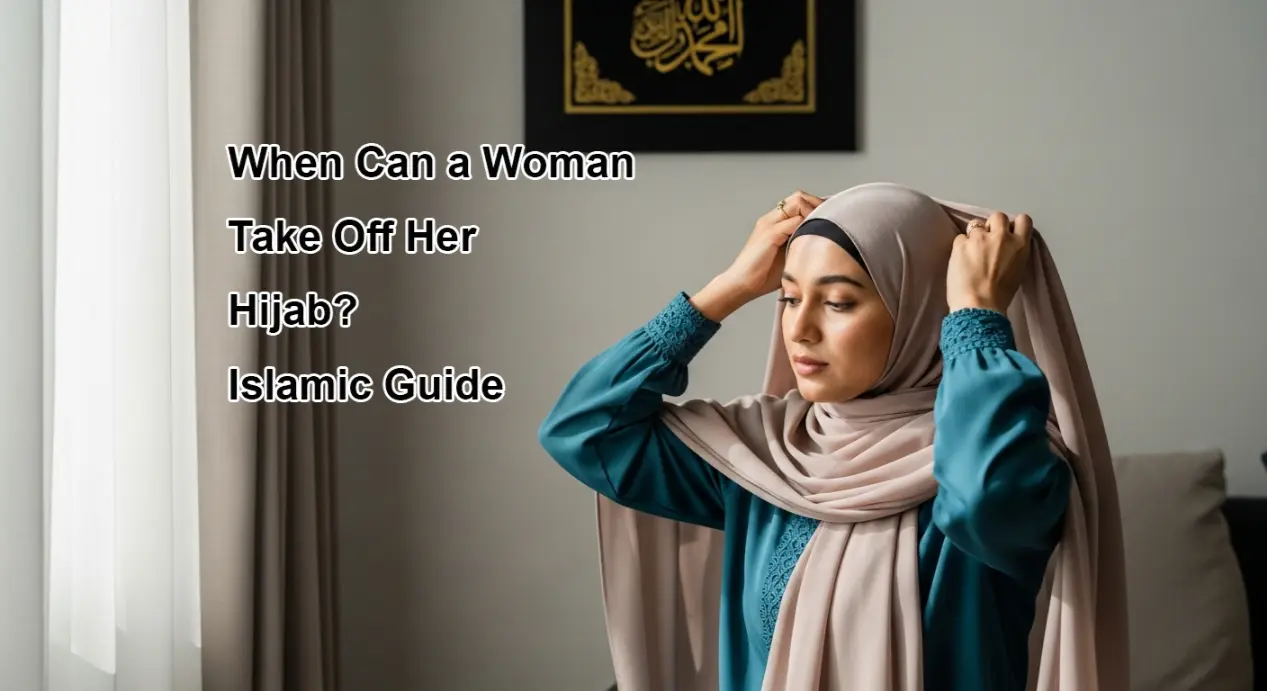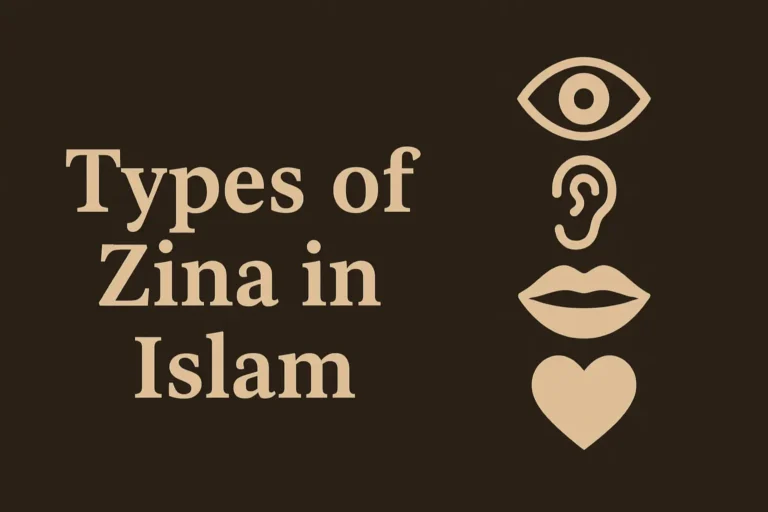As you walk into a family gathering, an all-women gym, or a hospital room, one question pops up: Can I take off my hijab here? For many Muslim women, it’s not a fleeting thought, but a serious question about modesty, obedience, and faith.
When can a woman take off her hijab? The answer isn’t just about location. It’s about who is around, why it is needed, and what Islam actually allows. Many sisters don’t feel comfortable when they are with women, young children, or even close family. Others have to deal with medical emergencies, or live in non-Muslim countries where the hijab is a source of tension, or a degree of risk.
This article clears up all the ambiguity. Based on the Qur’an, authentic Hadith, and opinions of trustworthy scholars, we will examine each situation in which a woman can remove her hijab. You will also find real examples of Muslim women making these decisions, as well as the guidance from Islam in each issue.
The Purpose of Hijab in Islam
Hijab is more than just some fabric. It is a statement of faith, a barrier of dignity, and a marker of identity. When a Muslim woman wears the hijab, she is not following a fashion rule; she is in submission to Allah and shielding herself from unwanted attention.
The function of hijab is more than a fashion statement. Hijab encourages humility, modesty, and honor. Hijab provides boundaries, it draws lines such as public/private, and what’s to be shared and what is to be safeguarded from public spectacle. Because, Hijab is a commandment from Allah not as misery but mercy.
“And tell the believing women to lower their gaze and guard their private parts and not to display their adornment except that which [ordinarily] appears thereof…” — Surah An-Nur (24:31)
This verse lays the groundwork for hijab, hijab is meant to cover adornment/beauty when practised in modesty. Islam understands the needs of humanity and allows for practicality in many instances. That is why the rest of that verse goes on to list those exceptions; people and places one can remove their hijab. Identifying those exceptions provides clarity and confidence for Muslim women around the world.
Before we go into those considerations, we need to listen closely: hijab is not about oppression. Hijab is about empowerment through submission. When done with intention, it becomes a spiritual act — one that draws a woman closer to her Creator every day.
When Can a Woman Take Off Her Hijab?
Islam acknowledges that a woman may take off her hijab in certain circumstances. These cannot be considered cultural or emotional, but rather clearly prescribed in the Qur’an, Sunnah, and consensus of scholars. The following scenarios would be the main cases:
1. In Front of Mahrams (Unmarriageable Male Relatives)
A Muslim woman may take off her hijab in the presence of a mahram. Any man she can never marry, by blood or legal relationship, is a mahram.
Who are mahrams?
- Father
- Brothers
- Sons
- Uncles (mother’s and father’s side)
- Grandfathers
- Nephews (the sons of a brother or sister)
- Father-in-law
- Stepfather (if married to her mother)
- Son-in-law
“…and not to reveal their adornment except to their husbands, their fathers, their husbands’ fathers, their sons…” — Surah An-Nur (24:31)
Real-Life Example:
Fatima comes home from her job after work and sees her father and two younger brothers sitting in the living room. Fatima comfortably takes off her hijab. Islam allows this completely and is not sinful
2. In Women-Only Gatherings (Where There’s No Fear of Exposure)
The hijab can be removed in environments where there are no men – but there is one catch: we have to remain modest.
For example:
- Private weddings
- Sisters-only halaqas
- Women’s gyms or salons
- Female hospital wards
Note: If any woman present might describe another’s beauty to non-mahram men, scholars advise caution. The Prophet ﷺ said:
“Let not a woman look at another woman, then describe her to her husband so it is as if he is looking at her.” — Bukhari, Hadith 5240
3. In Front of Young Boys Who Have No Awareness of Women’s Beauty
If a boy is too immature to comprehend feelings of attraction or lust, then it is inappropriate for him to be wearing hijab.
“…or children who are not yet aware of the private aspects of women.” — Surah An-Nur (24:31)
Example:
A woman is babysitting her 4-year-old nephew. Since he has no comprehension of attraction between genders, she need not wear hijab around him.
4. During Medical Treatment or Emergencies
When health is compromised or the need for medical interventions arises, Islam allows for safety and well-being to prevail over covering — especially if no female doctor is available.
“There is no sin on you if you are under constraint and necessity…” — Surah Al-Baqarah (2:173)
Example:
When a woman in labor takes her hijab off in front of male doctors, during delivery. This is fully allowed due to necessity.
5. In Old Age (For Elderly Women Without Desire)
Allah gives a clear exception to older women:
“And women of post-menstrual age who have no desire for marriage – there is no blame upon them for putting aside their outer garments…” — Surah An-Nur (24:60)
However, Allah says it is better for them to remain modest – so even an exception is given with dignity.
6. In Private At Home (With No Non-Mahrams Present)
If a woman is inside her home, she can remove her hijab if she is alone, only with female relatives, or only with other women. If a woman has a guest (not related to her) or is in the presence of a man (mahram), she will need to wear hijab again.
When Must A Woman Wear Her Hijab?
While Islam gives clear allowances, it also clearly specifies when hijab must be worn. Many women find themselves in situations every day where they feel the lines are blurred — but Islam has little bias on the subject in many occasions.
1. In Front of Non-Mahram Men
Any non-mahram man – one that is Islamically able to marry – requires a woman to keep her hijab on. This includes:
- Cousins
- Family friends
- Brothers-in-law
- Stepbrothers (from a different mother or father)
- Classmates or coworkers
- Male neighbors
Common Misconception:
Many cultural norms treat cousins as if they are siblings. Still, in Islam, cousins are not considered mahram – hijab must be worn in front of them.
2. In Mixed Gatherings (Even if Casual or Religious)
In educational environments, da’wah gatherings, or social family events, if there are non-mahram men present, hijab is obligatory.
“O Prophet, tell your wives and your daughters and the women of the believers to bring down over themselves [part] of their outer garments…” — Surah Al-Ahzab (33:59)
3. On Video Calls or Social Media (With Non-Mahrams)
Hijab must apply online just as it would apply offline. On a Zoom call, an Instagram post, if there are non-mahram men able to see her — hijab is obligatory.
Example:
A woman joins a Qur’an group that is on a video call, and the male participants are viewing her. She must have her hijab on as long as she is present in that session.
4. In Front of Servants, Drivers, or Male House Helpers (If They’re Non-Mahram)
Hijab is also obligatory in private residences in the presence of home help and/or drivers that are not mahrams.
5. Around Young Boys Who Understand Female Beauty
When a boy has matured into the age in which he notices, or has an attraction to women (generally around ten or older), hijab is obligatory.
Scholars agree that awareness, not just puberty, is the key factor here.
6. During Prayer (Even at Home If a Non-Mahram Can See)
Hijab is required during salah. Even if a woman is alone but in an observable area (i.e., open window facing street), it is better that a woman covers.
Quick Rule of Thumb:
If the man is not your mahram, or the space is not fully private — wear your hijab. It’s not about who you trust — it’s about obeying Allah’s boundaries.
Real-Life Stories: Sisters Who Faced Hijab Dilemmas and What They Did
Rules become more meaningful when they are witnessed in real-life struggles. The ensuing true, relatable stories illustrate how Muslim women have considered hijab with bravery, sincerity, and lucidity, even when those scenarios were complex or potentially emotionally charged.
1. A Sister and Her Cousin’s Wedding
Amina, a 22-year-old from London, was invited to her cousin’s wedding. It was a family occasion, and her mother insisted that she does not need to wear hijab with “her own people”.
But Amina had personally read Surah An-Nur, and she knew the truth: her cousins were non-mahram men.
So Amina did not take her hijab off completely; she wore a stylish yet modest outfit that included an elegant matching scarf. She looked beautiful and felt safe in her clothing. She could have followed the comfortable option of removing the hijab altogether, but she chose to remain obedient.
“It wasn’t easy,” she said. “But I didn’t want to please people at the cost of displeasing Allah.”
2. The Zoom Tafsir Class
Fatima was delighted to join an online tafsir class each week presented by a credible teacher. Whom had both men and women.
In the first class, I noticed a lot of girls had their cameras on, some taking their hijabs off, assuming this was a religious setting.
Fatima decided to keep her camera off and her hijab was on, even though it was a women-led discussion.
“I reminded myself,” she said, “even religious gatherings don’t cancel out the rulings of hijab if non-mahrams are present. Knowledge should never come at the cost of modesty.”
3. The Salon Misunderstanding
Zehra, based in Dubai, went to an expensive women-only salon for a day of pampering. She relaxed; the hijab came off, then bang — a male cleaner entered the room without knocking.
After the incident, she was more careful.
Now, she only goes to salons that have a female-only policy and security visible to the clients in the lounge for private rooms.
“It’s not about paranoia,” Zehra explained. “It’s about taqwa — God-consciousness in all spaces.”
4. The Sick Mother and the Male Doctor
Sana, was a young girl from Karachi, she had to take her mother in the middle of the night to the emergency room. The emergency room did not have a female doctor, and her mother had to be treated quickly.
The male doctor had to examine her mother, and the hijab had to be lifted for the treatment to be done.
sana felt guilty – but after some discussion with a local scholar she felt better.
“Islam never wants to harm us,” she was told. “In cases of necessity, Allah permits what is normally not allowed.”
This story assisted Sana in appreciating that hijab was largely about intention and balance, and not blind rigidity.
These lessons expose a stark reality: Muslim women aren’t simply wearing cloths — they are transporting faith. And every choice, every hurdle, every challenge, is towards Allah.
Final Reflections: Modesty, Balance, and Trusting Allah
Hijab is not merely a code of dress — it requires a declaration of obedience, humility and divine love. It is not oppression or restriction — it is understanding when to shield your honour, and how to live with integrity.
The rulings are clear. But, so is the mercy of Islam. A woman is allowed to take off her hijab, when Allah allows her to — and keeps hijab, when Allah commands it. There is no need to fight social trends, opinions, and ever-present pressures from those around you when Allah gave you guidance.
“And whoever fears Allah – He will make for him a way out.” — Surah At-Talaq (65:2)
Having faith in Allah’s limits creates peace. The more boundaries you protect within your modesty, the more Allah will honour you – in this life and the next.
Remember:
- Modesty doesn’t finish when the scarf finish – modesty starts in the heart.
- Hijab isn’t about men, it’s about Allah.
- Knowledge shines light – question your doubts and use the Qur’an and authentic ‘ulama as references.
Whatever part of the journey you are in, move one step closer to Allah – He will carry the rest of the way.
Frequently Asked Questions (FAQs)
1. Can a woman take off her hijab in front of female friends?
Yes — If the female friends are trustworthy women, a woman may remove her hijab in their presence. However, she should still dress modestly and not expose private parts (awrah).
Note: If a woman appears to emulate men or is inclined to imitate and admire them or she has a history of gossiping to non-mahram men the scholars agree should be a warning sign.
2. Is it allowed to remove hijab in front of male cousins?
No. Boy cousins are not mahram in Islam. She must wear hijab in front of them, no matter what cultural expectations or family relations there may be.
3. Can a woman take off hijab in front of children?
Yes — but only if the child is too young to recognize or be attracted to a woman’s beauty.
After a boy reaches the point where he can be considered to have mental maturity (generally around age 10+), the hijab becomes obligatory with respect to him.
4. Can a woman remove her hijab for a passport or ID photo?
Yes, but conditions apply. It needs to be required by law and while the photo is kept secure or only other females can see it. Many countries allow hijab in photos as long as the face is completely uncovered.
If the officer was male, then she should still have her hijab, except in those situations where there was no alternative.
5. What if there is no female doctor — can she remove hijab during treatment?
Yes, in emergencies or when the medical situation requires it, women can uncover the relevant areas in front of male doctors.
This is based on the Islamic legal maxim: “Necessities make permissible the prohibited” (Al-darurat tubih al-mahdhurat).
6. Can I take off my hijab when praying at home?
Only if no non-mahrams can see you (even from a window or if you have a digital camera going). If you are in total privacy, you can pray without her hijab.
7. Can I take off my hijab in a women-only gym or salon?
Yes, if it is truly a women only gym or salon and no males (cleaners, etc or security cameras) can enter the facility.
Make sure you check the privacy policy of the facility before uncovering.










